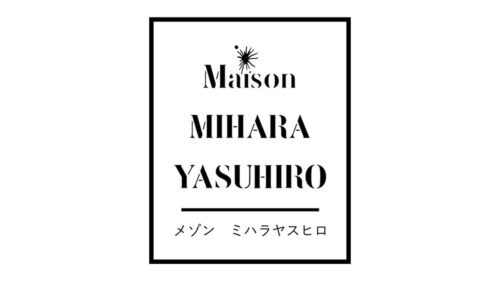Maison Mihara is a conceptual fashion brand from the famous Japanese designer Mihara Yasuhiro. The brand got international recognition for its innovative design of sneakers, however, there is much more than footwear that deserves attention in Maison Mihara collections.
Meaning and history
Japanese designer Mihara Yasuhiro was born in Nagasaki in 1972 and graduated from Tokyo’s Toma University of Arts. In 1997 Yasuhiro founded his footwear brand and initially had no plans to go into clothing. Working on the Black Label line at Puma, the designer combined completely opposite styles, for example: sports sneakers with fur or traditional brogues with elements from the classic running model. In 2004, Mihara made his debut in Milan with a menswear collection, where he brought his avant-garde aesthetic and inventive fabric combinations.
Initially, Mahar’s brainchild was called “archi doom”. But under this name, the brand existed only for a year. In 1997, Yasuhiro graduated from the university and replaced “archi doom” with Mihara Yasuhiro.
Fine deconstructions, washed fabrics, and even his embroidery technique that Yasuhiro created himself. The embroidery is so detailed that from afar it is perceived as a print. And the designer still uses the “illusionary technique of layering” to this day. At first glance, it looks like a person is wearing two or more items, but in fact, it’s just one item. Initially, MIHARAYASUHIRO products were sold exclusively in independent SOSU MIHARAYASUHIRO stores.
A combination of sublimity and irony – this is how the founder of MAISON MIHARA YASUHIRO characterizes his brand. Under the name of the Japanese brand, they produce ultra-fashionable clothes and shoes, which are made taking into account fashion trends.
The company’s collections include monochromatic sneakers and sneakers, models with a metallic effect, embroidery, and sequins. Designers create clothes of asymmetrical cut, multi-layered products made of different color and texture materials. They decorate them with lace inserts, and logos, imitate scuff marks and splattered colors on fabrics.
Although the company has been in business for more than 20 years and showcases an array of talents ranging from shoe design to menswear that rivals couture, Mihara Yasuhiro remains a designer with a relatively niche audience in Europe and North America. In Asia, on the other hand, Yasuhiro’s influence is growing rapidly: Korean pop stars and Japanese actors often wear his clothes.
What is Maison Mihara?
Maison Mihara is the name of a Japanese brand specializing in the production of high-quality sneakers and stylish contemporary streetwear. The company was founded in 1975 and has since become one of the leaders in the sports shoe industry.
In terms of visual identity, Maison Mihara Yasuhiro is super cool, yet its logo still stays in the frames of “normality” by using the traditional color palette, composed of black and white. Even though, the small graphical element on the badge makes up a super playful image.
???? – Today
The Maison Mihara Yasuhiro logo is composed of a bold yet narrowed uppercase sans-serif wordmark with the “Mihara” and “Yasuhiro” parts separated by an abstract graphical element, which looks like an inkblot, drawn by hand. This central image makes up the whole mood of the logo, showing the true essence of the brand and its striving to open new horizons in fashion. As for the lettering, it looks stable despite the narrowed silhouettes of the letters and stands for confidence and establishing its place in the world of fashion.
Font and color
The lettering from the primary logo of Maison Mihara Yasuhiro fashion brand is set in a laconic sans-serif typeface, which looks pretty similar to such fonts as YWFT Ultramagnetic Rough Regular One or Noctura Georgia Sans Clean, with its narrowed yet bold characters and slightly softened cuts of the bars.
As for the color palette of the Maison Mihara Yasuhiro logo, it is as laconic as the font of the lettering — black and white. This is the perfect choice for any fashion label, as it looks good on each garment, whatever the fabric and the pattern of it are.









